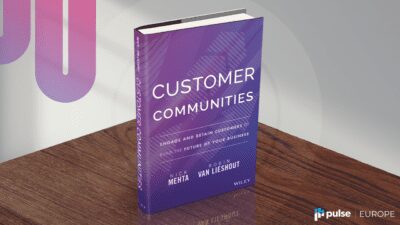Launching a Customer Community can feel overwhelming. From building a content strategy to getting your cross-functional teams aligned, there are a lot of boxes to tick off before you even go live. And once you do launch, you have to continuously monitor and refine.
But, you absolutely can’t skip building a Customer Community—and it can be simple.
Why You Need a Customer Community
In today’s market, providing a centralized destination for self-service resources is table stakes. Building a Customer Community provides that space, and allows you to:
- Create a cohesive customer experience
- Enable self-service and peer-to-peer support
- Streamline the product-feedback loop
- Boost engagement
- Build advocacy
To help kickstart your efforts, we’re here to give you a high-level overview of what you should expect in the first three months of your Community journey.
Let’s dive in.
The First 30 Days: Plan and Prepare
The first 30 days are some of the most crucial to your Community journey. You’ll be making decisions that will impact your long-term success and setting the groundwork for your users to become engaged advocates of your Community.
But don’t lose confidence—what it really comes down to is having a clear idea of your mission. As Seth Wylie, Head of Community, Gainsight, likes to say, “Keep a crystal-clear focus on what your Community is trying to achieve.”
Address These Questions
To chart your mission, start by asking yourself these essential questions. If you don’t have clarity on any of them, make sure to work with your team to nail them down before your launch.
- Program Types: What kind of initiatives or programs will resonate most with your Community members?
- Content Strategy: What type of content will be genuinely useful and engaging for your audience in the first 30-60-90 days?
- Engaging With Thought Leaders: Who are the potential thought leaders in your specialty, and how can you bring them into your Community?
- Goals and KPIs: What milestones are you working towards and how will you measure them?
- Proper Promotion and Traffic: How do you plan to position a Community as the central destination?
- Beta Group: Who can I tap to give me feedback on my Community before launch day? And how can I reward these early adopters to encourage them to grow into superusers?
Now that you’re armed with the roadmap for your Community launch strategy, let’s get to building! Gainsight’s Customer Communities platform provides you with the structure you need to add your content and organize it. No developer experience? No problem. We have a no-code solution so you can easily build a beautiful Community using our customizable widgets.
Your 60-Day Strategy: Implement and Launch
You’ve done the planning and you’re gearing up for your external launch. In this phase of your journey with Customer Community, you’ll be buttoning up any last-minute launch items and making sure to monitor the types of Community engagements coming through post-launch.
During this time, you will encounter a lot of different items that will require your attention. However, there are four core things to focus on no matter what other things might come up: your traffic strategy, internal and external communications, member engagement, and feedback loops.
Traffic Strategy
You’ve taken the time to create your arsenal of helpful content for your members to engage with. But without a strategy to distribute this content, your efforts could be wasted.
Ensure your content is easy to access, and drive traffic to it through a mix of:
- Integrations
- Email campaigns
- Newsletters
- In-app engagements
- Social media
Refining your traffic strategy will also help you grow your Community membership.
Internal and External Communications
Next, consider your strategy for both internal and external communications. In addition to the external traffic-drivers listed above, take every opportunity to let your employees know about the role of Community within the business.
Specifically, take time to articulate how your Community milestones support company-level goals. This will make it easier for cross-functional teams to support Community initiatives.
Member Engagement
Once you launch, your member engagement will be the lifeblood of your Customer Community. A key way to foster engagement is through recognition and rewards. For example, a member ranking structure guides members through a journey to become active users, helpers to other Community members, and onto superuser status. Superusers are often your company’s most valuable advocates.
Feedback Loops
One of the many benefits of a Customer Community is the goldmine of user feedback that you can harness for your product roadmap. Some innovations will arise organically. It’s also a good idea to conduct surveys or polls to gather insights on your users’ experience and identify areas for improvement.
Learn More: How Personio Created a Self-Service Customer Culture.
Your 90-Day Strategy: Measure and Tweak
In the first 60 days, you’ve built the scaffolding of your Community program. Now it’s time for some reflection. Take month 3 to measure what’s working and what still needs work.
Measuring your initial impact is crucial. In this last month, we recommend that you focus on these four items: health, growth, long-term content strategy, and your superusers.
Community Health Check
Conduct a comprehensive review of your Community’s health. How many people registered? What percentage of customer accounts are registered in the Community? How engaged is your audience? Are they actively posting and replying to one another? How many of the questions are left unanswered? And how much content is being created by non-employees? These numbers are not only good for your team to take note of, but also to prove value internally and continually showcase the value of your Community.
Community Growth
Evaluate the success of your traffic strategy and assess if your Community is growing steadily. Identify any areas where growth may be stalling. And remember that your first goal should be to create a central destination for all your different customer journeys.
It’s ok to continuously work on this, so don’t worry if you are not where you wanted or expected to be. Instead, use the data your Community is giving you to focus your efforts and fine-tune your practices.
Long-Term Content Strategy
Begin planning your content strategy for the long term. Consider seasonal or thematic content to keep engagement high. Remember: Create a content calendar to organize your topics and assignments every month.
Some key things to remember for your long-term content strategy include:
- Continue activating key members of your community to assist you with content creation and engagement.
- Keep your content focused on your goals, but also make it fun and engaging. Change it up by sharing roadmap updates and employee spotlights.
- Keep quieter categories active by adding new content, so your users have the sense that all your categories are worth visiting and engaging with.
- Consider the purpose of every piece of content and stay flexible, iterating your strategy as content needs evolve alongside business objectives.
Community Superusers
Say it louder for those in the back row: Find and nurture your superusers.
We can’t stress this point enough. Your Community champions or superusers are the individuals who have an outsize impact your Community. This could look like finding a solution to a complex question from a peer, or giving candid feedback on your Community strategy.
Once you have more than three superusers, give them the VIP treatment. Consider starting an exclusive space for them so you can tackle and address any Community issues together. Positioning your superusers as strategic partners will make your Community program more successful.
Finally, remember that Community is a journey, not a destination. This article provides a glimpse into the launch process—stay tuned for a deeper dive into each stage of launching your Community in our upcoming blog series.
Learn More
Looking create a single destination for your customers to connect, share best practices, provide feedback, and build a stronger relationship with your product?
Schedule a demo to discover the Community platform that keeps your customers coming back for more.
Speaking of Community … we wrote the book on it!

Robin van Lieshout, Chief Strategy Officer, Gainsight, and Nick Mehta, CEO, Gainsight, bring you Customer Communities: Engage and Retain Customers to Build the Future of Business.
